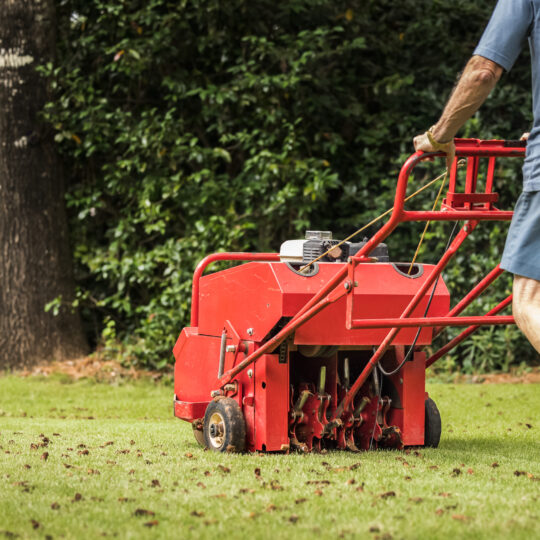How to Aerate Your Lawn
3 Different Methods to Consider

Have you noticed your grass looking thin and patchy? Does water pool at the surface instead of soaking into the soil? Is it hard to dig a garden tool into the ground? If so, chances are the soil is compacted. This is a common occurrence, especially after the summer when there’s more foot traffic across your lawn. Luckily there’s a way to break it up and give water, air, and nutrients access to the root zone to revitalize the grass. Learn how to aerate your lawn and why continued maintenance can help prevent future problems.
When to Aerate Your Lawn
Just like many lawn care tasks, there’s an ideal time to aerate. Target the time period when grass is still actively growing. Leave it alone during the summer months when it’s dormant and under a lot of heat stress. There’s also no sense in aerating when the ground is frozen in the winter. If you have a cool-season grass, aerate in early spring or early fall when the grass is out of its dormant state. Warm-season grasses should be aerated in late spring or early summer during its peak growing period.
Lawn Aeration Process
Once you’ve determined the soil is compacted and your lawn could use aeration, the next step is to choose what type of aeration to try.
- Core aeration is a more popular method that removes small plugs of soil from the lawn.
- Spike aeration pokes holes in the soil without removing plugs.
- Liquid aeration is sprayed across your lawn to create fractures within the soil.
While you can rent a core aerator from a garden center or purchase spike aeration tools, one of the most effective ways to aerate is to contact a professional lawn care service. A pro not only has the necessary tools, but they have the knowledge and experience to get the job done safely and efficiently.
Here are some tips to keep in mind before, during, and after aerating:
- Water the lawn thoroughly a day or two before to keep the soil moist and easier to penetrate.
- Run the aerator over the entire lawn in a consistent pattern and overlap passes to help ensure complete coverage.
- If you choose core aeration, leave the plugs on the lawn to act as a natural fertilizer as they naturally decompose.
- Apply fertilizer or overseed the lawn after aerating for better product-to-soil contact.
- Water after aeration to help the soil recover and promote healthy grass growth.
Aeration only needs to be done once a year if there’s consistent heavy traffic or soil compaction. Otherwise, you only need to aerate every few years to help keep your lawn lush. In the meantime, you should still continue to water and fertilize your lawn to keep it looking its best.
Contact Shades of Green Lawn & Landscape to learn more about our specialized lawn aerating services. Let us help improve your yard’s root system, leading to a healthier lawn in the long run.